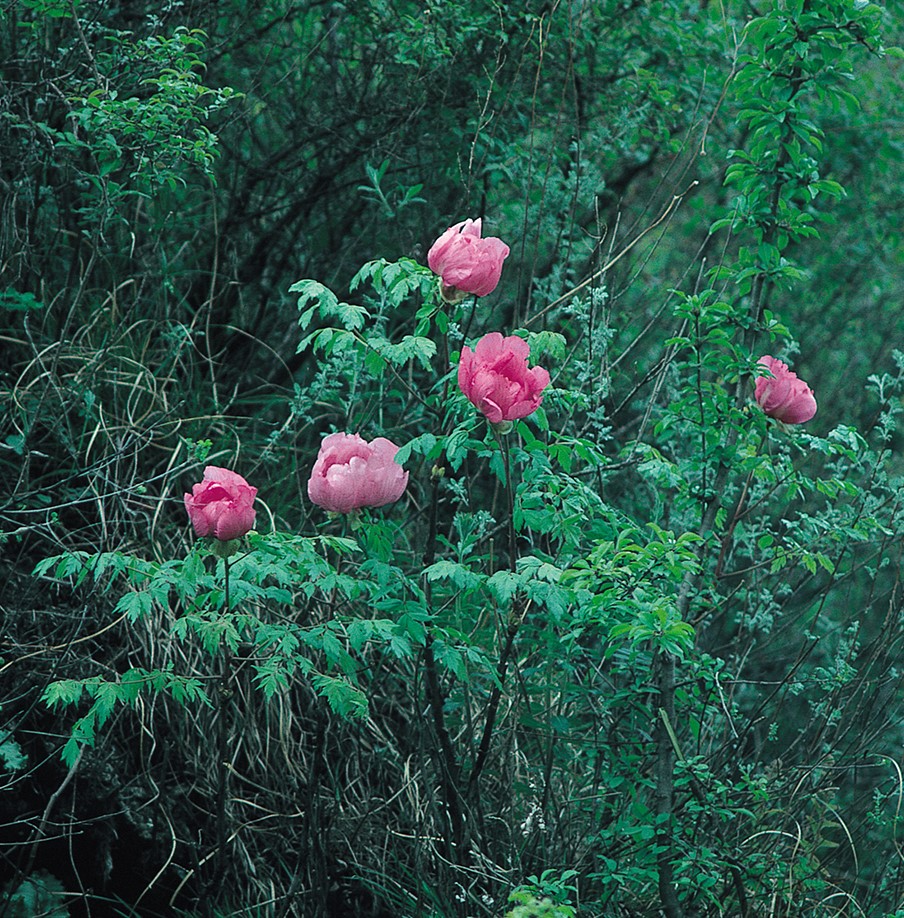Paeonia decomposita
Sponsor
Kindly sponsored by
Sponsored by David Sayers in memory of Hedvika Fraser.
Credits
Julian Sutton (2020)
Recommended citation
Sutton, J. (2020), 'Paeonia decomposita' from the website Trees and Shrubs Online (treesandshrubsonline.
Genus
Common Names
- sichuan mu dan
Other taxa in genus
- Paeonia cathayana
- Paeonia Central Plains Cultivars
- Paeonia delavayi
- Paeonia Gansu Cultivars
- Paeonia Itoh Cultivars
- Paeonia Japanese Cultivars
- Paeonia jishanensis
- Paeonia × lemoinei
- Paeonia ludlowii
- Paeonia Lutea Hybrids
- Paeonia ostii
- Paeonia Other Shrubby Hybrids
- Paeonia qiui
- Paeonia rockii
- Paeonia rotundiloba
- Paeonia Southern Yangtze Cultivars
- Paeonia Southwest Cultivars
- Paeonia × suffruticosa
Shrub to 1.8 m, glabrous throughout. Stems to 2 cm diameter; bark grey-black, peeling off in flakes. Lower leaves 3–4 times compound, mostly triternate-pinnate, ternate-bipinnate or biternate-bipinnate, with 29–65 leaflets; terminal leaflets elliptic to orbicular, 3-lobed to the base, the terminal lobe itself 3-lobed; lateral leaflets elliptic to orbicular, 3-lobed or toothed. Flowers solitary, terminal, April–May in China, with 2–3(–5) unequal, linear-lanceolate bracts; sepals 3–5, obovate with caudate apex; petals 9–12, rose, obovate, 4–7 × 3–5 cm, apex usually lobed and toothed; disc half-enveloping carpels at anthesis, leathery, white or yellowish, with triangular teeth; styles 1–2.5 mm, stigmas red. Follicles black-brown when mature, ellipsoid, 2–4 × 1.3–1.7 cm. Seeds glossy black, 8–10 × 6–8 mm. (Hong et al. 2001; Hong 2010, 2011)
Distribution China NW Sichuan (Dadu River Valley)
Habitat Thickets; young secondary deciduous forest; sparse Cupressus chengiana forest; 2000–3100 m.
Conservation status Not evaluated (NE)
This pink-flowered species has made little or no impact on cultivation. It is a narrow endemic, existing as a few populations threatened by habitat degradation, inbreeding and digging for medicine or local gardens (Hong 2010; Hong 2011; Wang 2019). The species was previously more broadly drawn: subsp. rotundiloba D.Y. Hong was raised to specific rank by Hong (2011). Records of P. decomposita in cultivation in our area (Centro Botanico Moutan 2020) might then be treated with caution, due to possible confusion with P. rotundiloba, which is more certainly grown in Europe. Zhou et al. (2014) found no good molecular evidence that P. decomposita was one of the progenitors of hybrid woody peonies in China.


